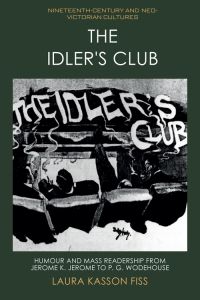Investigates whether a popular magazine can promote social mobility by joking about clubs
- Focuses on Victorian humour, a subject that is undergoing a renaissance
- Primary sources are mainly published literary works, both periodicals and books
- Connects, biographically and stylistically, figures that have developed disparate reputations
- Treats well-known, yet under-studied, popular authors: Jerome K. Jerome and P. G. Wodehouse especially
- Treats lesser-known or lesser-studied works by authors who attract more critical attention: J. M. Barrie, G. K. Chesterton, Robert Louis Stevenson and Israel Zangwill
- Introduces humour into the discussion of feelings about reading
Poking fun at Victorian social clubs became a way of asserting and redefining social belonging. At the turn of the century, amid intense social change, the club became the subject of sustained humour in the Idler magazine and its circle, from editors Jerome K. Jerome and Robert Barr to J. M. Barrie, Arthur Conan Doyle, Barry Pain, Israel Zangwill, and even P. G. Wodehouse. Rather than doing away with the club itself, these authors embraced the paradoxes of the club and re-defined it as a space of possibility. Their humorous, fictional clubs aided the social mobility of the authors who created them, who in turn served as models for the readers who might never cross the literal thresholds of Clubland.

 The College of Arts
The College of Arts